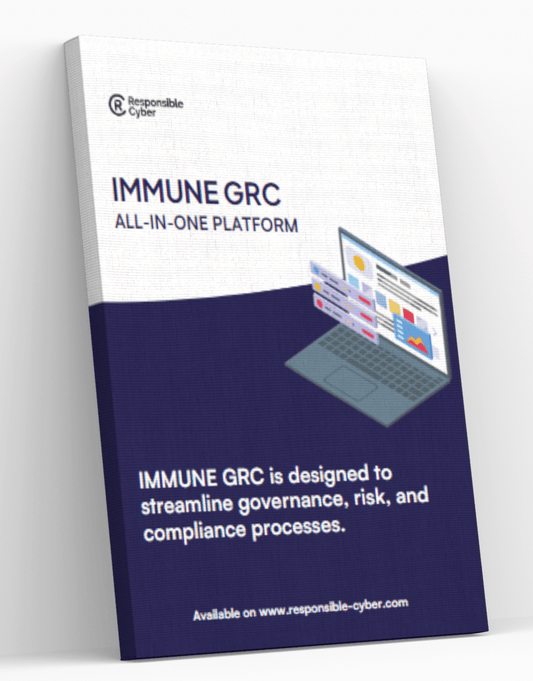Understanding the COBIT Toolkit: A Comprehensive Guide to IT Governance and Management

In the rapidly evolving world of information technology, effective governance and management are essential to ensuring that IT systems and processes align with business goals. The COBIT Toolkit, developed by ISACA, is a comprehensive framework designed to help organizations achieve these objectives. This article will delve deeply into what the COBIT Toolkit is, its components, benefits, implementation strategies, and why it is crucial for modern enterprises.
What is the COBIT Toolkit?
The COBIT (Control Objectives for Information and Related Technologies) Toolkit is a globally recognized framework for the governance and management of enterprise IT. It provides a comprehensive set of guidelines, best practices, and tools that enable organizations to effectively manage their IT operations and ensure they deliver value. The COBIT Toolkit is particularly useful for aligning IT with business objectives, managing risks, and ensuring compliance with relevant regulations.
Key Components of the COBIT Toolkit
The COBIT Toolkit consists of several key components that together provide a holistic approach to IT governance and management. These include:
1. Framework
The COBIT framework is the core component, providing a comprehensive structure for managing IT processes. It defines IT governance and management objectives, which are organized into five domains:
- Evaluate, Direct, and Monitor (EDM): Focuses on governance objectives and ensuring that stakeholder needs are evaluated, and the direction is set and monitored.
- Align, Plan, and Organize (APO): Covers strategic planning and organizing of IT resources and processes.
- Build, Acquire, and Implement (BAI): Involves the development and acquisition of IT solutions and their implementation.
- Deliver, Service, and Support (DSS): Deals with the operational aspects of IT service delivery and support.
- Monitor, Evaluate, and Assess (MEA): Focuses on performance monitoring, evaluation, and compliance.
2. Process Descriptions
The COBIT Toolkit includes detailed descriptions of the processes involved in IT governance and management. Each process is defined with specific objectives, inputs and outputs, key activities, performance metrics, and roles and responsibilities. This helps organizations understand and implement the necessary actions to achieve their IT goals.
3. Governance and Management Objectives
COBIT outlines a set of governance and management objectives that are critical for effective IT governance. These objectives are designed to ensure that IT delivers value to the business, manages risks, optimizes resources, and maintains compliance with relevant laws and regulations.
4. Performance Management
The COBIT Toolkit provides a performance management framework that includes metrics and maturity models to help organizations measure and improve their IT governance and management processes. This component is essential for continuous improvement and ensuring that IT aligns with business objectives.
5. Maturity Models
COBIT includes maturity models that allow organizations to assess the maturity of their IT governance and management processes. These models provide a roadmap for improvement by identifying current capabilities and setting targets for future development.
6. Implementation Guide
The COBIT Toolkit comes with an implementation guide that provides step-by-step instructions for adopting and integrating the framework into an organization’s existing processes. This guide includes practical tips, case studies, and examples to help organizations effectively implement COBIT.
Benefits of the COBIT Toolkit
Implementing the COBIT Toolkit offers numerous benefits for organizations. Here are some of the key advantages:
1. Improved IT Governance
The COBIT Toolkit provides a structured approach to IT governance, ensuring that IT processes are aligned with business goals. This improves decision-making, accountability, and transparency in IT operations.
2. Enhanced Risk Management
COBIT helps organizations identify, assess, and manage IT-related risks. By providing a comprehensive risk management framework, COBIT enables organizations to mitigate potential threats and vulnerabilities effectively.
3. Increased Compliance
The COBIT Toolkit ensures that IT processes comply with relevant laws, regulations, and industry standards. This reduces the risk of legal penalties and enhances the organization’s reputation.
4. Optimized Resource Utilization
COBIT helps organizations optimize the use of their IT resources, including people, processes, and technology. This leads to increased efficiency and cost savings.
5. Continuous Improvement
The performance management and maturity models included in the COBIT Toolkit support continuous improvement. Organizations can regularly assess their IT governance and management processes, identify areas for enhancement, and implement changes to achieve better results.
6. Enhanced Value Delivery
By aligning IT processes with business objectives, COBIT ensures that IT delivers maximum value to the organization. This enhances overall business performance and competitiveness.
Implementing the COBIT Toolkit
Implementing the COBIT Toolkit requires a strategic approach and careful planning. Here are some steps to consider:
1. Assess Current State
Begin by assessing the current state of your IT governance and management processes. Identify strengths, weaknesses, and areas for improvement. This assessment will provide a baseline for measuring progress and setting targets.
2. Define Objectives
Clearly define the objectives of implementing the COBIT Toolkit. These objectives should align with the organization’s overall business goals and address specific challenges identified in the assessment phase.
3. Develop an Implementation Plan
Create a detailed implementation plan that outlines the steps, resources, and timeline for adopting COBIT. The plan should include key milestones, deliverables, and responsibilities.
4. Secure Executive Support
Gaining support from senior management is critical for the success of the COBIT implementation. Communicate the benefits of COBIT and how it aligns with the organization’s strategic objectives to secure buy-in from key stakeholders.
5. Train Staff
Ensure that staff members are trained on the COBIT framework and understand their roles and responsibilities in the implementation process. Training should be ongoing to keep up with changes and updates to the framework.
6. Implement and Monitor
Execute the implementation plan and monitor progress against the defined objectives and milestones. Use the performance management and maturity models provided by COBIT to measure success and identify areas for improvement.
7. Review and Improve
Regularly review the effectiveness of the COBIT implementation and make necessary adjustments. Continuous improvement is essential to maintaining alignment with business goals and adapting to changes in the IT landscape.
Conclusion
The COBIT Toolkit is an invaluable resource for organizations seeking to improve their IT governance and management practices. By providing a comprehensive framework, detailed process descriptions, and tools for performance management, COBIT enables organizations to align their IT operations with business objectives, manage risks, ensure compliance, and optimize resource utilization. Implementing the COBIT Toolkit requires careful planning and execution, but the benefits far outweigh the efforts, leading to enhanced value delivery and continuous improvement in IT governance and management.
Whether you are a small business or a large enterprise, the COBIT Toolkit can help you navigate the complexities of IT governance and management, ensuring that your IT systems and processes are robust, efficient, and aligned with your strategic goals. By embracing the COBIT Toolkit, organizations can position themselves for long-term success in today’s dynamic and ever-evolving digital landscape.







